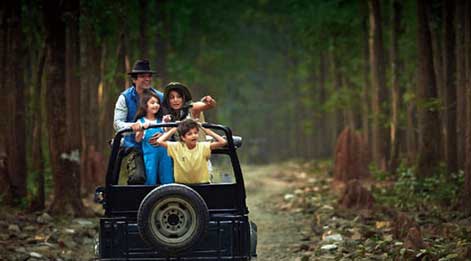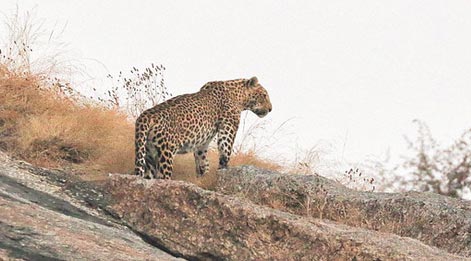Things to do in Jawai National Park
Leopard Safari - The Leopard Safari offers tourists the opportunity to explore the granite hills of Jawai, which are home to a population of leopards. This region stands out in India as a prime location for observing cave-dwelling leopards, warranting a dedicated segment of the safari. The heightened popularity of the leopard safari is attributed to the presence of approximately 50-60 leopards in the area, making sightings almost guaranteed. During this safari, visitors witness these spotted creatures leaping between rocks and engaging in prey activities. Notably, the leopards display awareness of human settlements but remarkably refrain from causing harm to the locals.


Tribal Tour - The residents of this region, belonging to the Rabari tribe, have been coexisting with leopards and other wildlife for many years. Their proximity to these animals doesn't deter them from engaging in activities such as taking cattle for grazing in the jungle or pursuing other tasks in the woods. The Rabari tribe sustains their livelihood through cattle rearing, farming, pottery, and the production of milk and dairy products. The harmonious coexistence of leopards and humans in this region is a distinctive feature, as both have peacefully made it their home.
Jawai Bandh Visit - As the largest water reservoir in western Rajasthan, Jawai Dam boasts a depth of 62 feet (18.89 meters). Maharaja Umaid Singh of Jodhpur undertook the construction of this significant dam across the Jawai River, offering a picturesque panorama of the river. Initiated on May 12, 1946, the dam's completion took place in 1957. The sight of overflow water gracefully cascading from its 13 channel gates enhances the dam's beauty. Additionally, the catchment area of Jawai Dam serves as a captivating sunset point, attracting visitors to its scenic charm.
Birdwatching - Jawai assures a unique bird-watching experience, particularly thriving between October and March. The region serves as a habitat for migratory birds such as flamingos, cranes, geese, and ruddy shelducks, alongside permanent residents like black-winged kites, shikra, falcons, vultures, rock eagle owls, owlets, robins, and more. The Birdlife safari operates during the daytime, open throughout the winter season from November to March.
Dev Giri Temple Visit - Nestled amidst one of the adjacent hills, the Devi Giri temple is dedicated to the local goddess Ashapura Mata Ji. The locals firmly believe that she serves as the protector of the entire village from natural calamities. Intriguingly, the temple isn't solely frequented by human inhabitants but also draws visits from wild animals. The captivating sight of the temple is enhanced by its intricate positioning amid the colossal rocks.
Ranakpur - Kumbhalgarh Excursion - Approximately 51 km away from Jawai, lies Ranakpur, renowned for its exquisite Jain Temples. Ranakpur unveils the captivating beauty of Jain architecture, captivating visitors with its intricate structural artistry. The hall within the temple premises, adorned with 1100 pillars, stands out as a remarkable marvel, each pillar featuring a unique design, showcasing the engineering and design brilliance of a bygone era. Key attractions in Ranakpur include Shri Falna Swarna Jain Tirth (Golden Jain Temple), Ranakpur Dam, and Narayan Temple. Continuing 33 km ahead, you reach the enchanting destination of Kumbhalgarh. A must-visit in Rajasthan, Kumbhalgarh is renowned for its majestic fortress, wildlife sanctuary, Parshuram Mahadev Temple, Hammeripal Lake, and various other attractions.